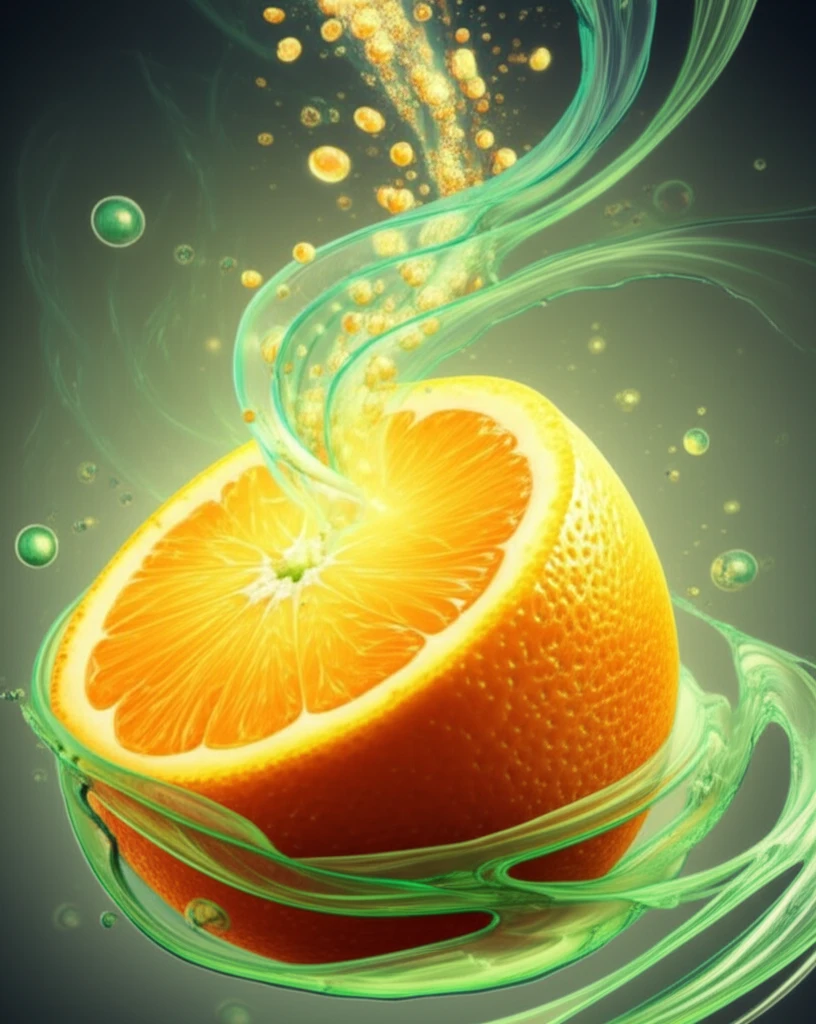
Citrus Power: Unlocking Flavonoids with Green Solvents
"A natural way to boost the extraction of antioxidants from Aurantii Fructus for health and wellness."
In a world increasingly focused on sustainable solutions, the quest for eco-friendly extraction methods has never been more critical. Conventional solvents often used to extract bioactive compounds from natural sources can be harmful and pose disposal challenges. Deep eutectic solvents (DESs) have emerged as promising "green" alternatives, attracting significant attention due to their unique physical and chemical properties.
DESs are created by mixing two or more safe components—a hydrogen bond donor (HBD) and a hydrogen bond acceptor (HBA)—that combine to form a eutectic mixture. This mixture is characterized by strong intermolecular hydrogen bonds. Commonly used HBAs include choline chloride and betaine hydrochloride, both inexpensive, biodegradable, and non-toxic. When mixed with HBDs like urea, ethylene glycol, or glycerol, they create solvents with remarkable advantages.
Aurantii Fructus (AF), the fruit of Citrus aurantium L., has been used in traditional Chinese medicine for centuries to treat gastrointestinal disorders. Its active components, including narirutin, naringin, hesperidin, and neohesperidin, possess anticarcinogenic, antioxidant, and antimicrobial effects. While traditional extraction methods involve hazardous solvents, DESs offer a safer, more sustainable approach. This article explores how DESs can enhance the extraction of these valuable flavonoids from AF, opening new avenues for natural health and wellness.
The Science Behind Deep Eutectic Solvents

Deep eutectic solvents (DESs) are gaining traction as environmentally friendly alternatives to traditional organic solvents. These solvents are typically composed of a hydrogen bond acceptor (HBA) and a hydrogen bond donor (HBD), which, when mixed, form a eutectic mixture with a melting point lower than that of the individual components.
- Eco-Friendly: DESs are made from biodegradable and non-toxic components.
- Cost-Effective: The starting materials for DESs are typically inexpensive.
- Easy to Prepare: DESs can be easily synthesized with minimal equipment.
- Tunable Properties: By adjusting the HBA and HBD, the solvent can be optimized for specific extraction needs.
A Promising Future for Green Extraction
The findings of this study highlight the potential of DESs as promising green solvents for extracting bioactive ingredients from traditional Chinese medicine. Compared to traditional solvents like methanol, DESs offer higher extraction yields and reduced environmental impact. As the demand for natural health products continues to grow, DESs may play a crucial role in developing sustainable extraction methods that preserve the potency and purity of valuable plant compounds.
